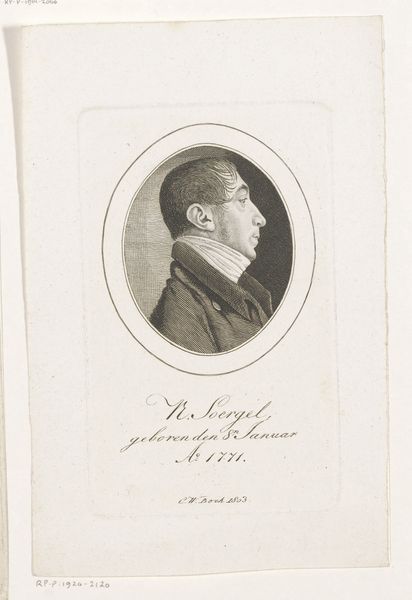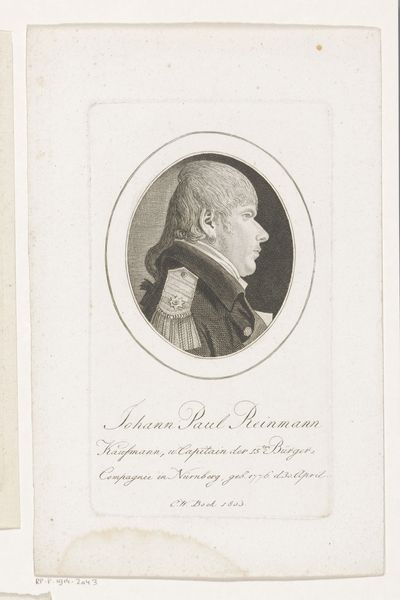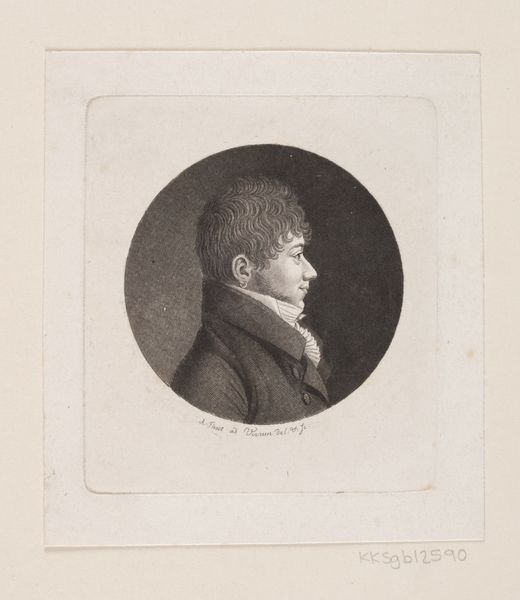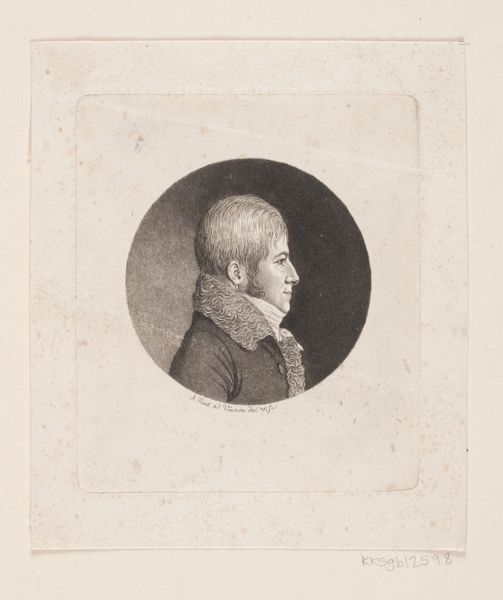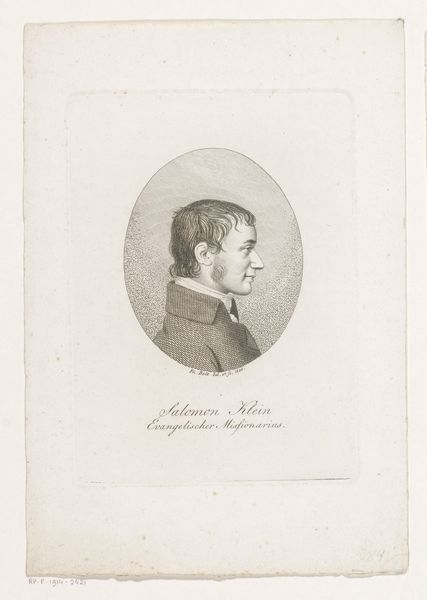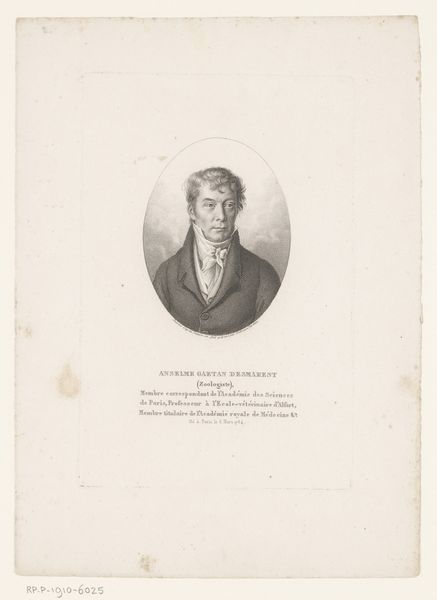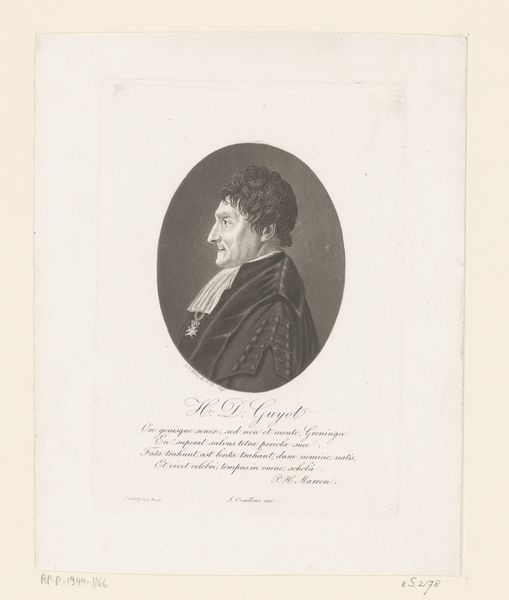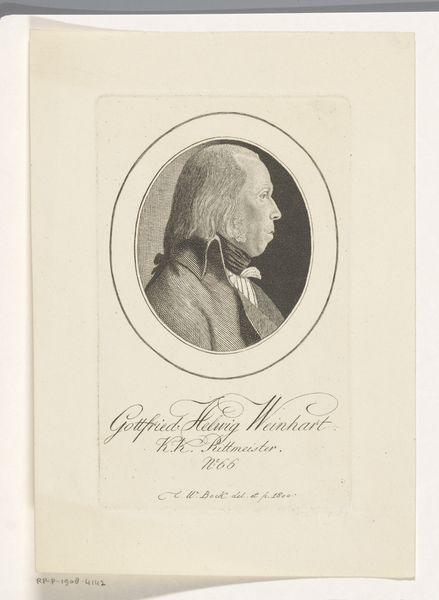
drawing, engraving
#
portrait
#
drawing
#
neoclacissism
#
academic-art
#
engraving
Dimensions: height 155 mm, width 104 mm
Copyright: Rijks Museum: Open Domain
Editor: Here we have Johann Carl Bock’s "Portrait of Johann Paul Harl," dating from around 1805 to 1843. It's an engraving, a detailed drawing really, held at the Rijksmuseum. The subject's stern profile set against the oval border and crisp script gives it an air of serious formality. What do you see in this piece? Curator: Intriguing! Structurally, the stark contrast between the portrait and its setting immediately catches the eye. Notice how the artist's use of hatching and stippling in the engraving generates tonal variation and defines the sitter's features, almost sculpting them on the page. Consider how the oval border isolates and elevates the subject, forcing our attention onto the precise rendering of his physiognomy and attire. Editor: That makes me think about how portraits function to convey character and status. Does the engraving medium itself play a role in that message here? Curator: Precisely! Engraving, with its capacity for fine detail and crisp lines, lends itself to creating an image of exactitude and control. The linear precision in the subject’s coat, and indeed his haircut, reflects the subject's presumed rationality, discipline, and standing. Note, however, how those clear contours are juxtaposed against granular textures achieved by a meticulous build-up of dots, indicating complex interaction of form. This combination conveys a nuanced sense of both certainty and layered psychological depth. Editor: So the artistic choices emphasize not just who the subject *is* but the very *idea* of who he is meant to represent? Curator: Precisely! Furthermore, ask yourself how its success in presenting the man depends entirely on surface treatments, from which emerges a sense of space and three dimensionality. It truly captures that neoclassical fascination with order, line, and form as paramount to representing reality. Editor: This piece suddenly feels far from flat. Curator: Agreed! Focusing on its components unveils just how dynamically Bock constructed meaning here, doesn't it?
Comments
No comments
Be the first to comment and join the conversation on the ultimate creative platform.

